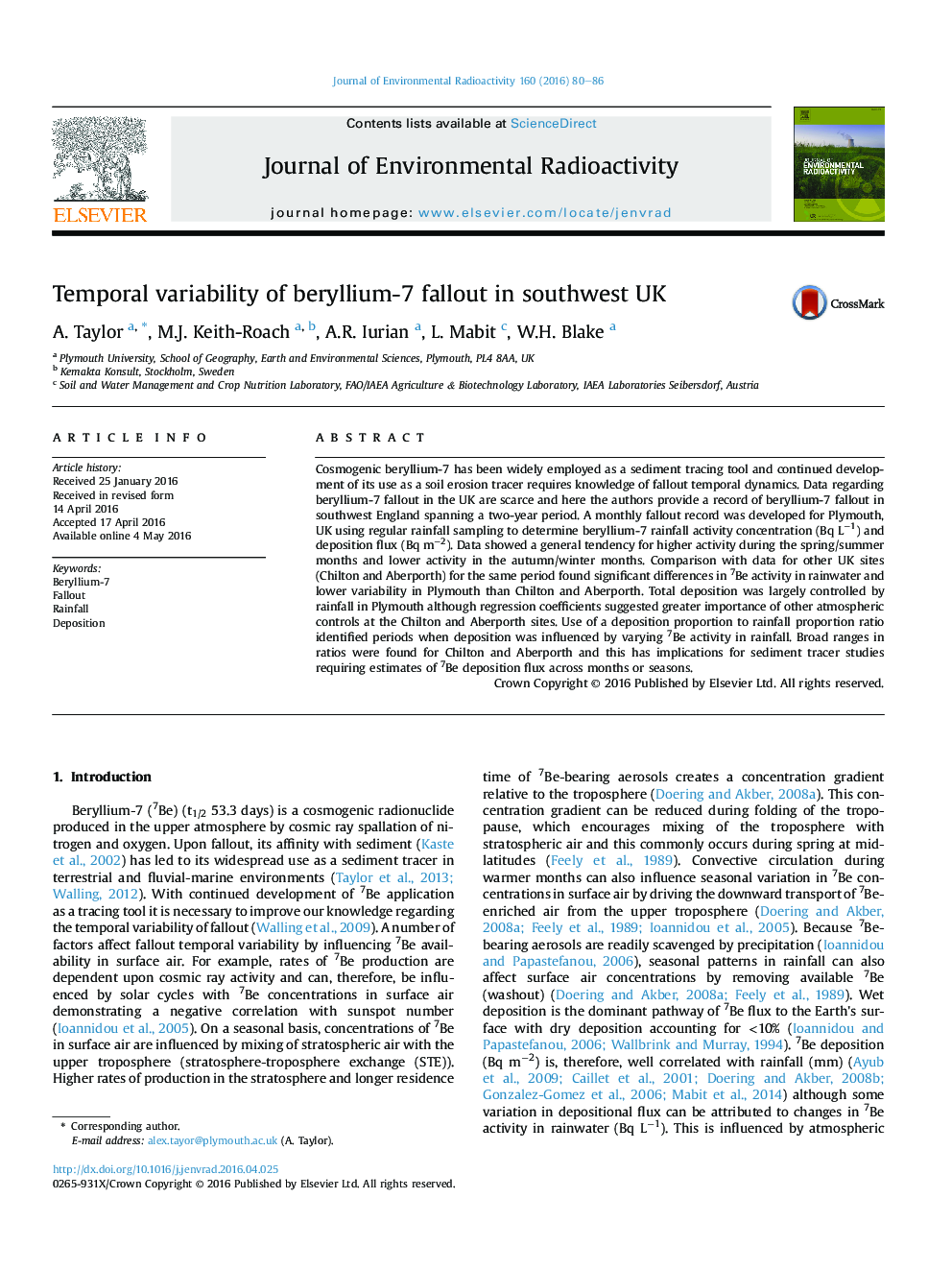| Article ID | Journal | Published Year | Pages | File Type |
|---|---|---|---|---|
| 8081774 | Journal of Environmental Radioactivity | 2016 | 7 Pages |
Abstract
Cosmogenic beryllium-7 has been widely employed as a sediment tracing tool and continued development of its use as a soil erosion tracer requires knowledge of fallout temporal dynamics. Data regarding beryllium-7 fallout in the UK are scarce and here the authors provide a record of beryllium-7 fallout in southwest England spanning a two-year period. A monthly fallout record was developed for Plymouth, UK using regular rainfall sampling to determine beryllium-7 rainfall activity concentration (Bq Lâ1) and deposition flux (Bq mâ2). Data showed a general tendency for higher activity during the spring/summer months and lower activity in the autumn/winter months. Comparison with data for other UK sites (Chilton and Aberporth) for the same period found significant differences in 7Be activity in rainwater and lower variability in Plymouth than Chilton and Aberporth. Total deposition was largely controlled by rainfall in Plymouth although regression coefficients suggested greater importance of other atmospheric controls at the Chilton and Aberporth sites. Use of a deposition proportion to rainfall proportion ratio identified periods when deposition was influenced by varying 7Be activity in rainfall. Broad ranges in ratios were found for Chilton and Aberporth and this has implications for sediment tracer studies requiring estimates of 7Be deposition flux across months or seasons.
Keywords
Related Topics
Physical Sciences and Engineering
Energy
Nuclear Energy and Engineering
Authors
A. Taylor, M.J. Keith-Roach, A.R. Iurian, L. Mabit, W.H. Blake,
